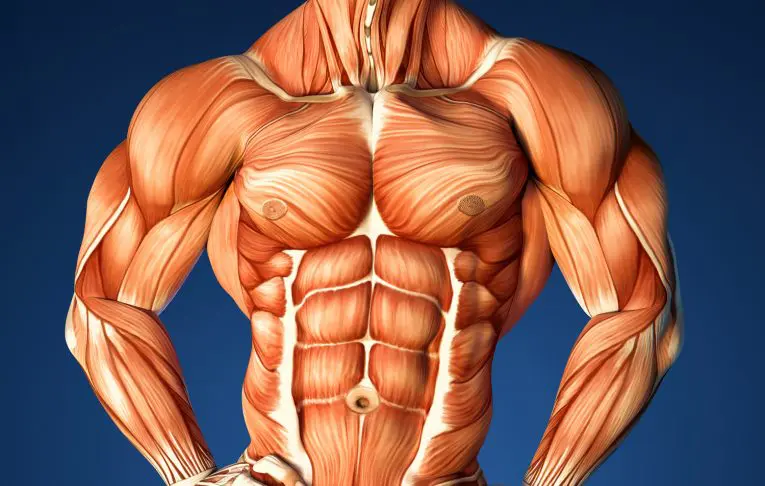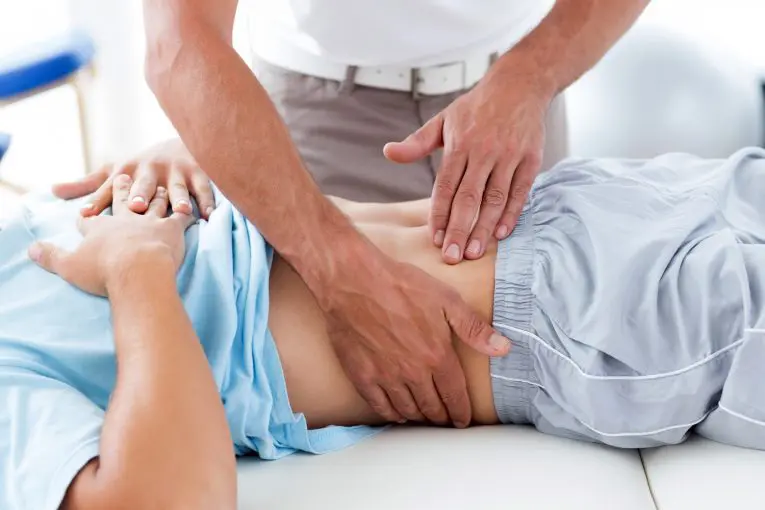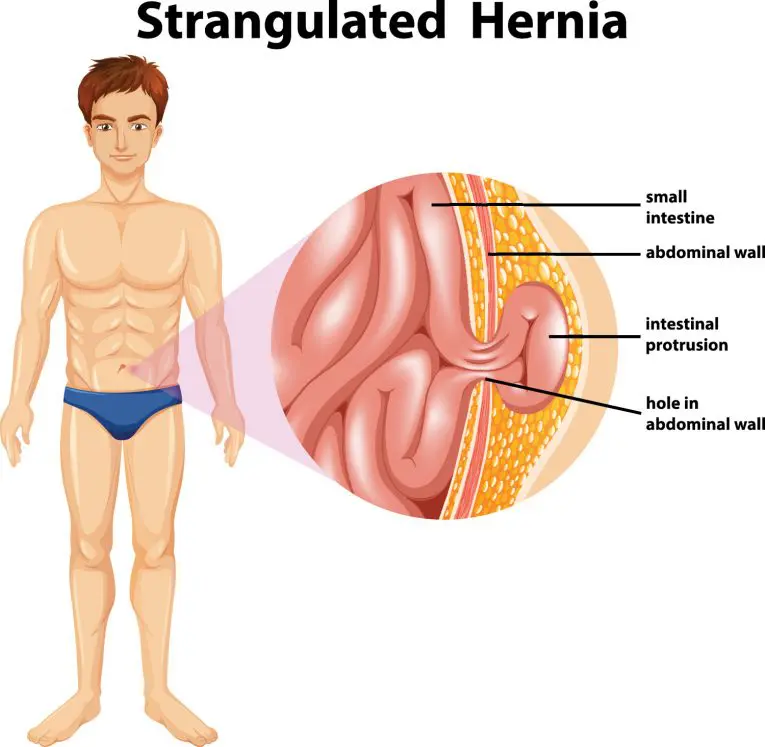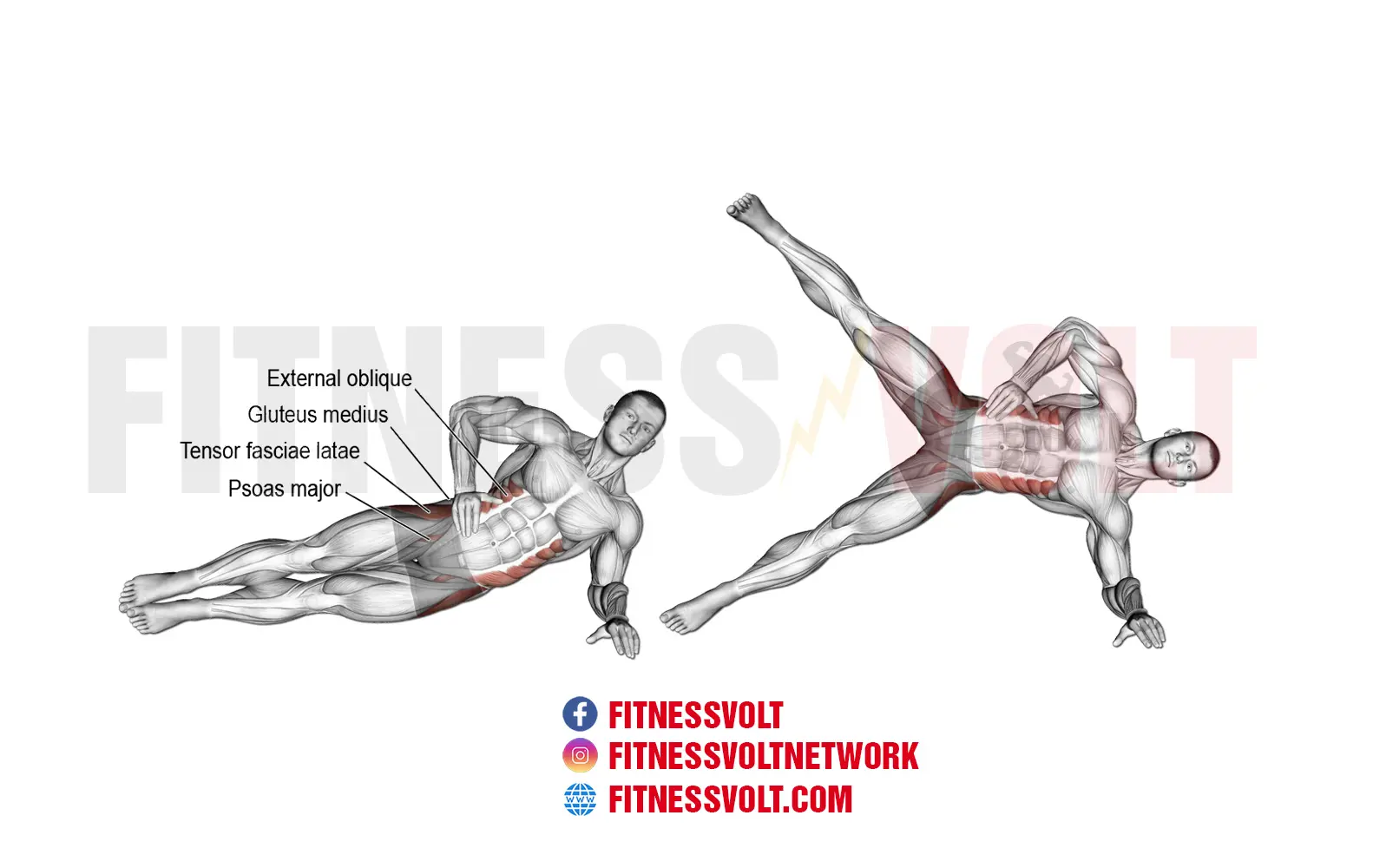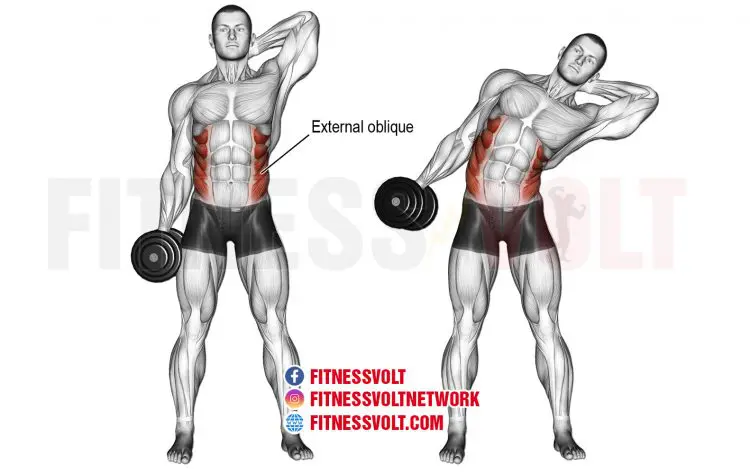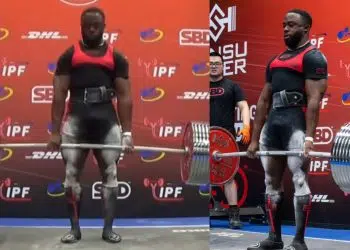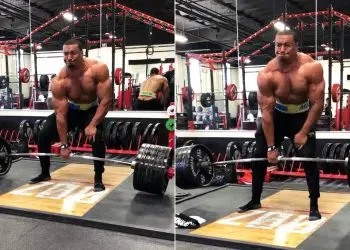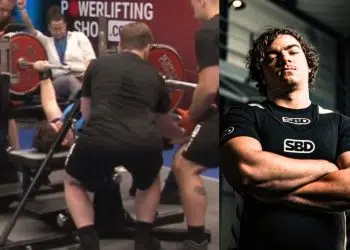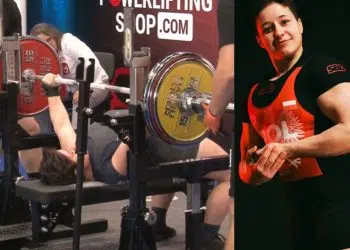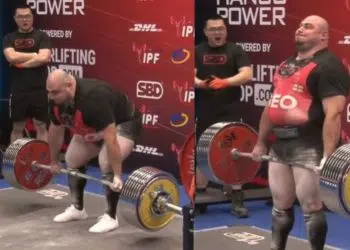Experiencing any type of unexplained pain can be unnerving, however, this is particularly true when it’s felt in the abdominal area.
Hernias occur when an organ or fatty tissue protrudes through the wall of muscle or tissue that contains it. While hernias can develop in many areas, they are commonly associated with the abdominal area.
Some hernias can go undetected and do not cause any problems, however, some do cause significant pain and discomfort and interfere with daily life and exercise.
So, how can you tell whether you’ve strained an abdominal muscle or have developed a hernia? This article will highlight the symptoms of both and help you determine the cause of pain.
The Abdominal Muscles
As mentioned, most hernias occur in the abdominal region – more specifically, directly over the obliques.
Level Up Your Fitness: Join our 💪 strong community in Fitness Volt Newsletter. Get daily inspiration, expert-backed workouts, nutrition tips, the latest in strength sports, and the support you need to reach your goals. Subscribe for free!
There are two oblique muscles – the internal and external oblique.
As the names suggest, the internal oblique is a deep muscle which lies underneath the external oblique. The external oblique is a superficial muscle that can be felt with the hand.
Alongside the transverse and rectus abdominis muscles, these muscles work to control the movement of the trunk.
Both oblique muscles originate from the lower ribs and attach to the pelvis. These muscles contract to cause trunk rotation, flexion, and lateral bending.
Furthermore, they also contribute towards increasing intra-abdominal pressure and maintaining good pelvic function.
When a hernia develops, it commonly develops around the oblique area. Therefore, pain in the obliques can often be mistaken for a strain, and vice versa.
The Symptoms Of An Oblique Strain
A muscle strain, often referred to as a pulled muscle, occurs when the muscle is stretched beyond its limits. As a result, damage occurs to the muscle or to the attaching tendons.
Strains often occur when the muscles are particularly tight or inhibited. Often poor posture, failing to warm-up, and repetitive movements contribute towards a muscle strain.
Poor exercise technique and muscular imbalances can also lead to the development of a muscle strain. Both of these can cause the hip to compensate and place excessive force on the obliques.
Considering the size and functions of the oblique muscles, an oblique strain may cause a range of symptoms. When a strain has occurred, pain may be experienced in the following locations:
- Flanks
- Groin
- Low Back
- Lower Abdomen
- Pelvis
- Shoulders
- Testicles
- Upper Back
- Waist
As touched on, the obliques connect the lower and upper body hence why pain may be experienced in such a vast number of locations.
Because a strain causes muscle damage, the level of pain is likely to increase with movement.
Sports Hernia
Although there are many potential causes of a hernia, intense exercise can increase the risk of a sports hernia.
As mentioned, a hernia occurs when internal tissue squeezes through the containing wall of muscle. Often, this type of hernia can be seen and felt protruding from the abdominal region.
The difference between a hernia and sports hernia is that, with a sports hernia, a sharp and continual pain will be felt in the groin. Additionally, the sports hernia may not be seen or felt.
Research suggests that, with a sports hernia, the pain occurs as a result of two factors – trapped and pinched nerves and tight external oblique muscles (1).
The Symptoms of a Sports Hernia
The difficulty with a hernia and oblique pain is that there are a number of symptoms that both have in common.
However, with a sports hernia, it is likely that you will experience the majority of pain in the lower abdomen and groin. Additionally, this pain is likely to be fairly constant.
Another tell-tale sign that you are suffering from a sports hernia is that the pain tends to fade with rest, however, as soon as you attempt to exercise once again, the pain returns.
Interestingly, with a sports hernia, pain is much more likely to be experienced on the right side than the left. The reasons for this are currently unclear.
With a sports hernia, a number of different movements and actions are likely to trigger pain. Some further signs of a sports hernia include:
- Pain when contracting the abdominals during every-day activities (i.e standing up, sitting down, standing for prolonged periods, and walking)
- A dull ache that gradually increases in intensity as the day progresses
- Pain that drastically increases with athletic activities such as running or sport
- Extremely sharp pain with lateral movements
- Experiencing a range of different “types” of pain (i.e sharp, dull, and tender)
Diagnosing A Sports Hernia
If you are experiencing these symptoms, then it is likely that you are suffering from a sports hernia.
However, to confirm whether or not this is the case, ensure that you visit a specialist for further examination and treatment.
There is a quick test that you can perform on yourself to determine if you are suffering from a sports hernia. The test is extremely basic and only takes a matter of seconds to complete.
When assessing yourself, you will need to rate the amount of pain you are experiencing by using the following scale:
0- No pain and discomfort
1- Minimal pain and discomfort
2- Mild pain and discomfort
3- Moderate pain and discomfort
4- Severe pain and discomfort
5- Extreme pain and discomfort
Simply, using the fingers, apply a little pressure to the pubic area. Then, press into the groin at the point where the inner leg meets the hips.
If you experience pain that is a level three or above, it is likely that you have a sports hernia and require treatment or even surgery.
Level Up Your Fitness: Join our 💪 strong community in Fitness Volt Newsletter. Get daily inspiration, expert-backed workouts, nutrition tips, the latest in strength sports, and the support you need to reach your goals. Subscribe for free!
While recovery from a sports hernia is possible without the need for surgery, studies show that a quick diagnosis and intervention is critical (2).
Oblique Strain vs. Sports Hernia
While there may be some similarities between an oblique strain and sports hernia, there are differences to be aware of.
In particular, the test outlined above should give you the best indication to the type of injury that you have suffered.
As highlighted, if you have a sports hernia, this test is likely to cause extreme discomfort whereas, with a strain, pain in this location is unlikely.
That said, you must always consult a specialist to determine the type and severity of the injury.
Treating An Oblique Strain
If it turns out that you have experienced an oblique strain, there are a number of measures that you should take in order to ensure that you make the best recovery possible.
After a strain, you should apply the RICE principle. This stands for rest, ice, compression, and elevation.
Start by resting the injured area. This means immediately stopping exercise that has caused the injury, pain, or soreness.
Research has found that applying ice to the injury can help to restrict blood flow to the injured site and consequently reduce inflammation and swelling (3).
Similarly, compression and elevation may help to reduce swelling and promote more efficient recovery. That said, because of the location of the injury, these two measures may be more challenging to implement.
Oblique Rehabilitation Exercises
Once the muscle has been repaired and pain is no longer an issue, you must perform oblique strengthening exercises to reduce the risk of reinjury.
During the early stages of recovery, it’s important that you avoid totally isolating the muscle. Instead, you should focus on performing gentle mobility and flexibility drills.
Once function has been restored, you should begin to perform some resistance exercises.
You must start light as attempting to immediately lift heavy is likely to cause reinjury.
However, as the weeks progress, look to very gradually increase the intensity of each exercise to rebuild muscular strength and function.
The following section will highlight three excellent oblique rehab exercises that you should incorporate into your training. Even if you haven’t experienced an oblique strain, these exercises can be used for prehab.
1) Side Plank
The side plank is an excellent exercise for developing the isometric strength of the obliques. The muscles must powerfully contract to hold the pelvis and trunk in place.
Side Plank Technique:
- Begin by lying on your side with the legs fully extended and feet on top of each other.
- Place the forearm flat on the floor ensuring that the elbow is directly under the shoulder.
- Brace your core and lift the hips from the floor.
- Hold this position for a prescribed period of time.
- Alternate sides and repeat.
2) Side Bends
For specifically isolating the oblique muscles, consider performing the side bend. While other core muscles must engage to stabilize the body, it is the contraction of the obliques that causes the trunk to bend.
This exercise can be performed with dumbbells, kettlebells, or cables.
Dumbbell Side Bend Technique:
- Begin by standing upright with the dumbbells in both hands.
- While keeping the core tight and chest lifted, laterally bend the trunk to the left until the dumbbell reaches the knee or slightly below.
- Once you have completed this, return to the starting position.
- Repeat this motion on the right side ensuring that you are, once again, lowering the dumbbell to the knee.
Also check the cable side bend exercise guide and videos
3) Woodchopper
While the side bend develops the oblique’s ability to bend the trunk, the woodchopper focuses on improving its ability to rotate the trunk.
As with the side bend, this exercise can be performed with a range of resistance equipment.
Dumbbell Woodchopper Technique:
- Begin by standing upright with a dumbbell in the left hand positioned by the side of the hip.
- Place the right hand over the left.
- Keep the core engaged and chest up as you rotate through the trunk to pull the dumbbell up and over the right shoulder.
- Return to the side of the hip in a controlled manner.
- Having completed reps on the left side, alternate on the right side.
Determining The Right Weight To Use
As mentioned, it is important that you start with a relatively light weight and focus on good technique initially. But how much weight should you begin with?
For this, it may be useful to use something known as Rate of Perceived Exertion. This is simply a scale that measures intensity.
The scale runs from one to ten. One indicates that the exercise requires minimal exertion while ten specifies maximal exertion.
To begin with, start with a weight that brings about an RPE of four to five. As the week’s progress and strength and movement improve, you can then look to gradually increase the RPE and weight.
Final Word
It’s important that you know the signs and symptoms of a sports hernia as quick diagnosis and treatment are key to making a quick recovery. Keeping this in mind, if you are ever experiencing oblique pain, you should perform the self-assessment outlined in this article
References:
1 – Ziprin, P.; Williams, P.; Foster, M. E. (1999-04). “External oblique aponeurosis nerve entrapment as a cause of groin pain in the athlete”. The British Journal of Surgery. 86 (4): 566–568. doi:10.1046/j.1365-2168.1999.01081.x. ISSN 0007-1323. PMID 10215838. https://pubmed.ncbi.nlm.nih.gov/10215838/
2 – Woodward, J. Scott; Parker, Andrew; MacDonald, Robert M. (2012-2). “NON-SURGICAL TREATMENT OF A PROFESSIONAL HOCKEY PLAYER WITH THE SIGNS AND SYMPTOMS OF SPORTS HERNIA: A CASE REPORT”. International Journal of Sports Physical Therapy. 7 (1): 85–100. ISSN 2159-2896. PMC 3273884. PMID 22319682. https://www.ncbi.nlm.nih.gov/pmc/articles/PMC3273884/
3 – Singh, Daniel P.; Barani Lonbani, Zohreh; Woodruff, Maria A.; Parker, Tony J.; Steck, Roland; Peake, Jonathan M. (2017-03-07). “Effects of Topical Icing on Inflammation, Angiogenesis, Revascularization, and Myofiber Regeneration in Skeletal Muscle Following Contusion Injury”. Frontiers in Physiology. 8. doi:10.3389/fphys.2017.00093. ISSN 1664-042X. PMC 5339266. PMID 28326040. https://www.ncbi.nlm.nih.gov/pmc/articles/PMC5339266/

